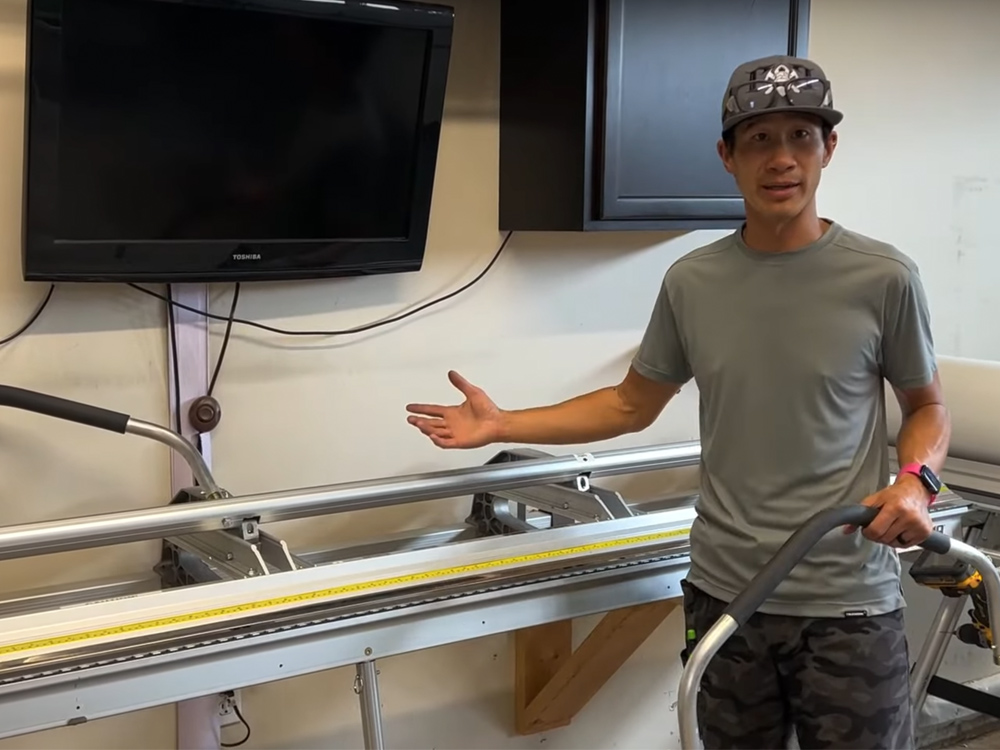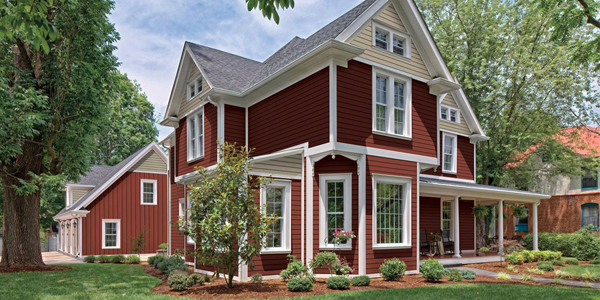Whether he’s on a roof or on his siding brake, siding installer Desmond Tse has mastered the art of working smarter, not harder. And he’s built a popular Instagram platform while doing so. Tse, aka @thesidingguy, shares siding tips and tricks to nearly 200,000 followers, teaching other craftspeople how to install vinyl siding (he’s been using Royal® siding throughout his career) and create custom trim more efficiently.
A Long Career Leads to Endless Siding Tips
Tse is a solo siding installer, but it wasn’t always that way. “I had 10 of my own crews working 10 projects at any given time,” he explains. “But I realized I really like installing as opposed to managing people and paperwork.”
Once he decided to make the move to being an independent contractor, Tse took a gradual approach, whittling down as his crews only as they voluntarily moved on to other jobs. Today, after several years on his own, he’s further transitioning in size to smaller projects than he used to.
Along the way, he’s picked up—and continues to learn—quite a few best practices and hacks to make his siding projects more effective and efficient. This includes on his Tapco Tools siding brake, where he has perfected bending techniques to the point of presenting workshops to others.

Siding Tips to Improve Your Efficiency
Here are a few best practice, tips and hacks for improving your siding skills, as well as your business approach.
Repetition is the key to improving your skills
Using a brake can feel intimidating. The best way to tackle it is repetition, Tse says. “Gather up scraps and practice. Work on a certain profile. That’s how it becomes muscle memory,” he notes.
The same goes for other aspects of the job: “Even when training crews, I encourage repetition. They’d ask to do siding, but first they need to learn J-channel, so I’d make them go do that over and over.”
Sometimes anything can be used as a jig on your brake
You can use a brake to make finish trim that provides a hidden fastener system
A good go-bag can save your time and effort
“One of the items that has helped increase efficiency for me over the years is my ‘go bag,’” Tse says. “This bag stays close to where I’m working at all times and holds all of my ‘just in case’ items. I keep spare fasteners of all kinds, tape, pencil lead refills, nail slot punch, spare tape measure, aviation snips, duckbill pliers, a crescent wrench, a folding tool, chalk line, and a pry bar. … By keeping my tool belt light I have more energy through the day and I don’t have to waste time going to the trailer to grab any items.” (See his go bag in action here.)
Sometimes you can leave your tape measure in your belt
Wear your fall protection harness properly
Ensure your social media posts add value
If you’re putting your projects and practices on Instagram, Facebook, X, or TikTok, consider what will benefit your audience in terms of both content and delivery. “I’m pretty easygoing, but I’m pretty particular. I try to keep my posts semi-serious but add humor once in a while,” Tse says. “My mentality for anything I post is ‘Is it going to add value?’ And if it’s not, I won’t post it.” (And, yes, sometimes something for just a laugh has value in its own way.)

Not everyone is wired to be a business owner
Owning your own business provides a lot of freedom, but it also requires a lot of heavy lifting when it comes to paperwork, dealing with numbers, and getting and retaining customers. Tse encourages new business owners to be true to their word and to always under-promise and over-deliver.
To learn more siding tips, follow Tse on Instagram at @thesidingguy.
Want more insights from your fellow pros? Subscribe to our monthly enewsletter.




